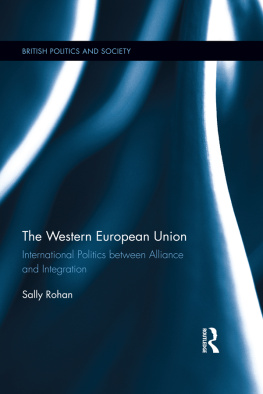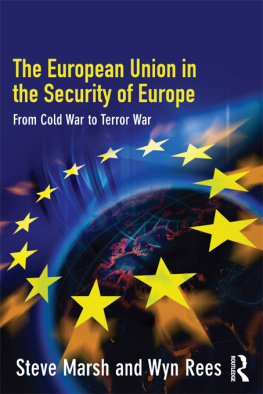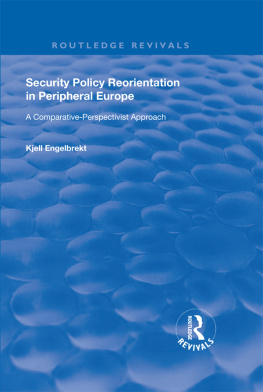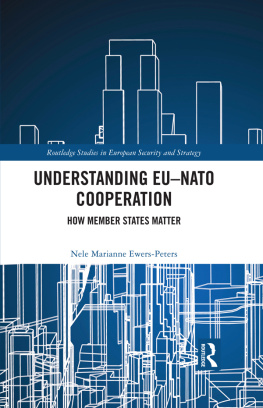Evolution and Devolution
To My Parents
First published 2000 by Ashgate Publishing
Reissued 2019 by Routledge
2 Park Square, Milton Park, Abingdon, Oxon, OX14 4RN
52 Vanderbilt Avenue, New York, NY 10017
Routledge is an imprint of the Taylor & Francis Group, an informa business
Copyright Tom Lansford 2000
All rights reserved. No part of this book may be reprinted or reproduced or utilised in any form or by any electronic, mechanical, or other means, now known or hereafter invented, including photocopying and recording, or in any information storage or retrieval system, without permission in writing from the publishers.
Notice:
Product or corporate names may be trademarks or registered trademarks, and are used only for identification and explanation without intent to infringe.
Publishers Note
The publisher has gone to great lengths to ensure the quality of this reprint but points out that some imperfections in the original copies may be apparent.
Disclaimer
The publisher has made every effort to trace copyright holders and welcomes correspondence from those they have been unable to contact.
A Library of Congress record exists under LC control number:
ISBN 13: 978-1-138-71642-1 (hbk)
ISBN 13: 978-1-315-19699-2 (ebk)
There are numerous people who made this work possible. 1 wish to thank Simon Serfaty for his guidance through the years. I would also like to extend special thanks to Regina Karp and Carl Boyd. Steve Yetiv deserves singular appreciation for his support and counsel. I am also deeply grateful to Dan Nelson for his efforts on a variety of fronts. I wish to thank Mr. James D. Buffett and Ms. Ann Newell for assistance in manuscript preparation. 1 also wish to acknowledge Ms. Kirstin Howgate for her patience and assistance through this process. To my friend and colleague Wayne Lesperance I extend both an acknowledgment of his support and an appreciation of his intellectual company. To my close friends, Kyle Bromwell, Drew Lucas and Mike Pappas, I offer thanks. Finally, I wish to thank Amber for putting up with me.
The history of European integration is one of bold initiatives and lofty visions that were usually checked by compromises and settlements which reflected the political realities of the day. Yet, while magnificent initiatives such as the European Defense Community often fell short, they set the stage for continuing progress toward an ever increasingly connected union of states. In the 50-year period since the end of World War II there has been remarkable progress in integrating the economic and security functions of the nationstates of Europe. Along the way, there has been an equally striking transformation in the nature and sovereignty of the West European nationstate. In economic terms, many of the states of Western Europe have evolved from the traditional nationstate to more competitive market-states. In the security sphere, these states have incorporated their defense functions to a level unheard of before World War II. Economic and security integration have complemented each other so that one leads if the other falters and progress on one front can propel movement on another.
The end of the Cold War marked one of the many milestones in European integration. The dissolution of the Soviet Union allowed the reunification of Germany and the expansion of the common space that is Western Europe to include areas formerly and artificially separated from the West by the bipolar rivalry. This lessened both the need and the desire for U.S. leadership in European security matters. However, crises such as Bosnia and Kosovo demonstrated the centrality of the U.S. as a European power outside of Europe even as they enlivened the debate over the development of a common European security policy.
The significance of the United States to Europe is tied to the relationships that exist both within the EU and in the EUs external intercourse. European integration has been driven and impeded by the bilateral relations of the EU memberstates. The dynamics of the process of integration exist at four levels. First there is micro level which denotes the EUs internal bilateral relations; the most significant being that of France and Germany, France and the U.K., and Germany and the U.K. Second there is the level of national policies and dealings between the EU partners and the organization itself. This reflects the ability of individual memberstates to either advance or derail integration. Third there exists state-to-state relationship between the individual EU members and the U.S. Fourth, and finally, there is the macro level of relations between the U.S. and the EU. These tiers often overlap so that, for instance, the bilateral relationship between the UK and the US has often led to British policies which alienate the island nation from the other EU members and retard progress toward common defense policies.
As the hard military threats of the bipolar rivalry diminish into the historical record, there has emerged a recognition that Europe still confronts a host of security hazards. Many of these concerns had been either overshadowed or contained by the dynamics of the Cold War, while others were created by the events surrounding the end of the conflict. In spite of the growing acknowledgment of the potential security issues which continue to threaten the peace and stability of Europe, most Western states have engaged in dramatic defense reductions. These cutbacks were initially seen as peace-dividends which, in an era of increasing constrained national budgets, could subsequently be used, for instance, to finance continuations in Europes social welfare system and decrease Americas federal budget deficit. The drive for, and the successful launch of European economic union (EMU) created additional pressures to limit defense outlays in order to qualify for monetary union. Consequently, at a time when individual defense outlays were being significantly diminished, national governments were confronted with the necessity of reforming and adapting their militaries to address new security concerns and undertake new missions. One of the most pressing security questions faced by national governments then becomes how to address new and diverse defense needs in an age of increasingly limited resources.
This study will examine multinational military integration as one possible approach whereby national governments can limit defense spending and still maintain military capabilities to meet the contemporary security threats faced by the nationstates of the continent. While broad theoretical approaches are examined, the emphasis of the work is focused on the nations of Western Europe and their transatlantic partner, the United States. The first three chapters of the work will explore the broad patterns of change in the international system which have propelled states to both reexamine how they define the functions and interests of the state. The second group of three chapters will discuss the new security issues facing Europe. The final three chapters will present specific case studies which illustrate the trend toward integration. In the end, it can be demonstrated that the convergence of factors such as the evolution of the nationstate, the change in contemporary security perceptions, fiscal constraints and the established progress in multilateral military cooperation, will continue to propel European security integration. Hence the nature of the nationstate and the accepted concepts of sovereignty will continue to evolve as the qualities and traits that mark the individual state also continue to mature.














